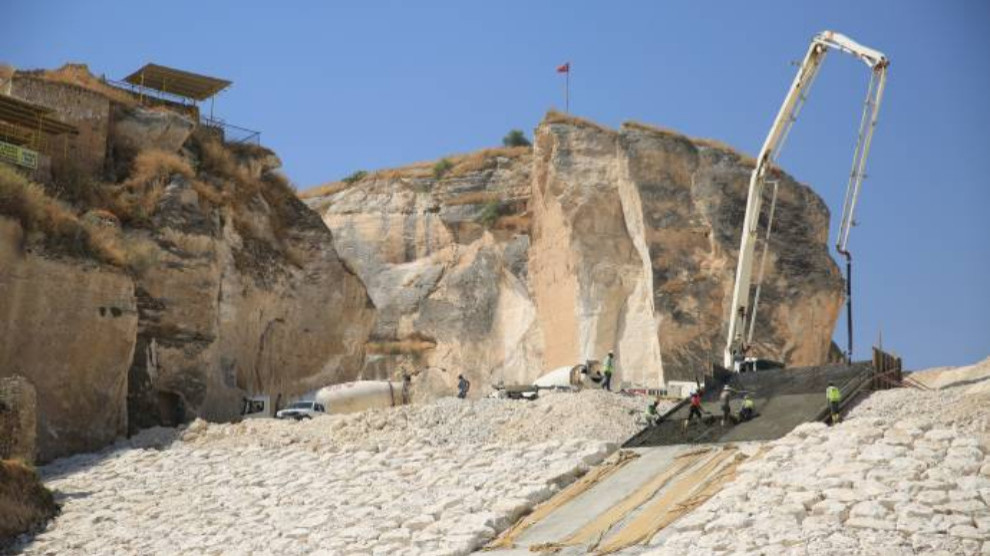Small Palace in Hasankeyf at risk of collapsing
The pressure created by heavy machinery in Hasankeyf has led to the risk of collapse of the so called "Small Palace".
The pressure created by heavy machinery in Hasankeyf has led to the risk of collapse of the so called "Small Palace".

The historical "Small Palace" in 12,000-years-old Hasankeyf, is at risk of collapsing.
The ancient site is to be submerged due to the construction of the Ilisu Dam.
Works around the historical Hasankeyf Castle and the Tigris Valley continue, affecting the old buildings.
The fortress and the Small Palace, which is covered with concrete, are closed just above the harbor which was built in order to reach the castle when it would be inundated. The fortress wall is trying to be "reinforced" with concrete and iron.
It was learned that there was a risk of collapse for the walls of the palace due to the vibrations of heavy machinery.
If Hasankeyf is inundated, an islet will be formed in the upper parts of the castle. A harbor is set up next to the castle walls in order to visit this island.
The foundations of the port recently started with concrete pouring. The pressure created by heavy machinery creates the risk of collapse in the historic Little Palace.
It has been learned that the concrete-filling work has been suspended since Monday due to the risk of collapse of the Small Palace.
Background
For 12.000 years, Hasankeyf has been a site of uninterrupted human settlement. With the labour of dozen cultures this outstanding universal site with its 5500 caves and hundreds of monuments has been created with an unique embedding into the Tigris valley.
Recent excavations show that Hasankeyf lays atop of a deep, uncovered cultural heritage and is the twin of Göbeklitepe, a sanctuary site 225 km to the west with a past of 12.000 years. Independent researchers state that Hasankeyf and the surrounding Tigris Valley fulfill 9 out of the 10 UNESCO criteria for a World Heritage Site.
The Ilisu Project was and is a completely wrong and destructive investment. That is why since the beginning the project was strongly opposed not only at the local level in Turkey, but also in Iraq, Syria and globally. Contrary to official claims, the dam would have no socio-economic or any other benefit for the vast majority of the mainly Kurdish society in the affected region. Up to 80.000 people would loose their livelihoods and end up in poverty.
The dam would contribute to the deepening of the assimilation of affected Kurds in the 199 villages and also Arabs from Hasankeyf town. The rich biodiversity of the Tigris River ecosystem – still mainly natural – would be degraded significantly.
The Ilisu Project would also gravely affect the downstream stretches of the Tigris, seriously jeopardizing the water supply of major Iraqi towns, and Iraqi agriculture would be put under serious risk, in particular the UNESCO site of Mesopotamian Marshes in southern Iraq would face reduced downstream flows.
The Ilisu Dam would increase political conflicts on regional level.